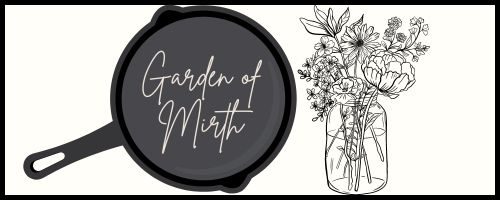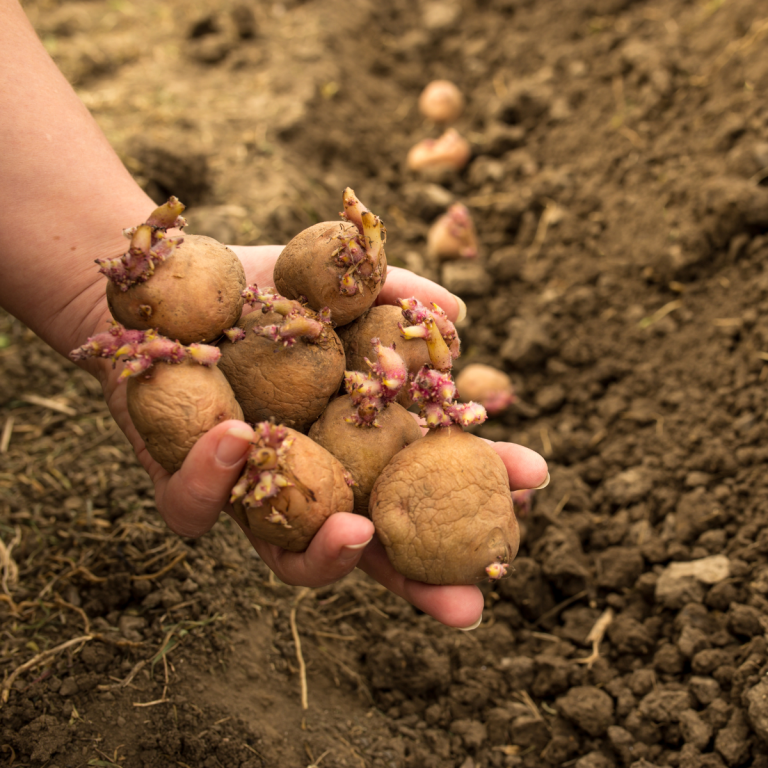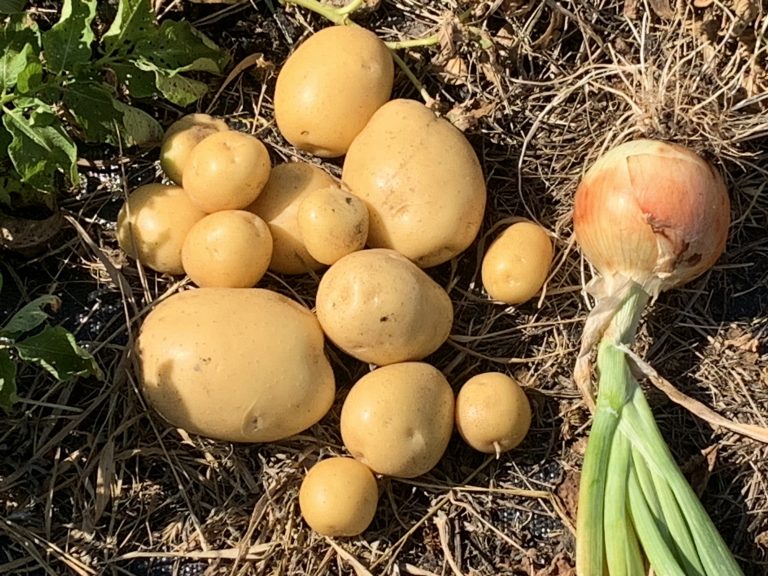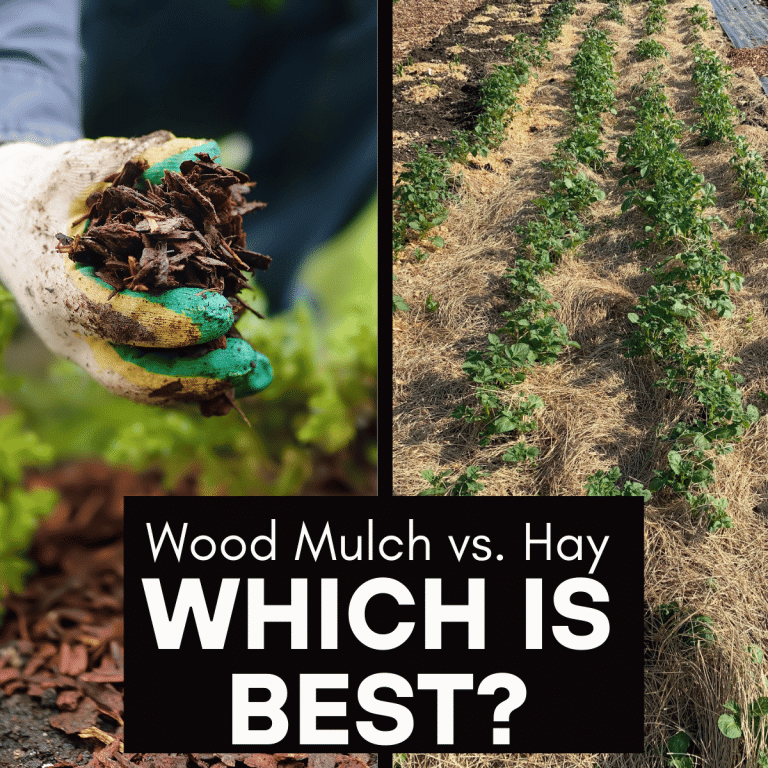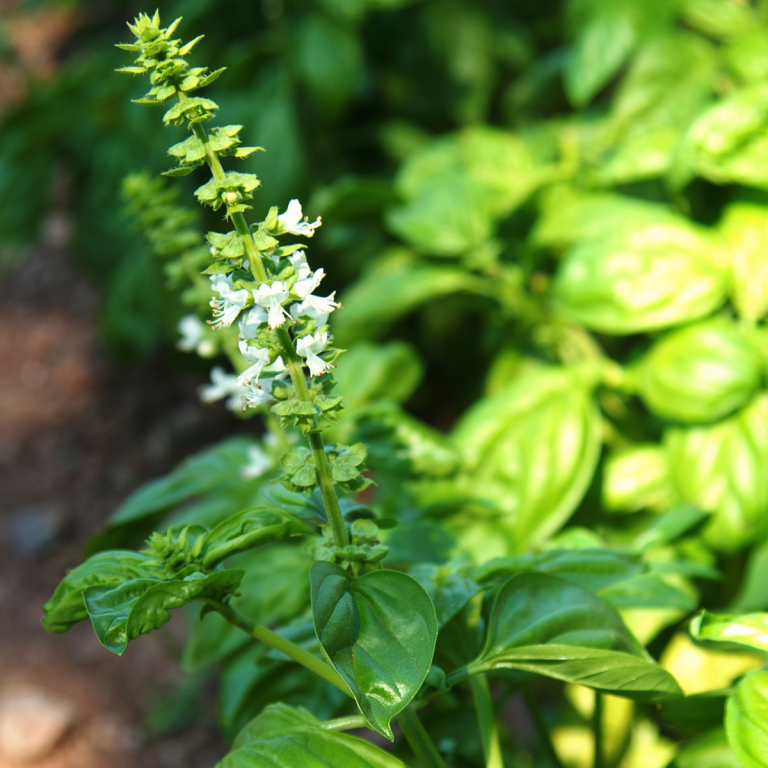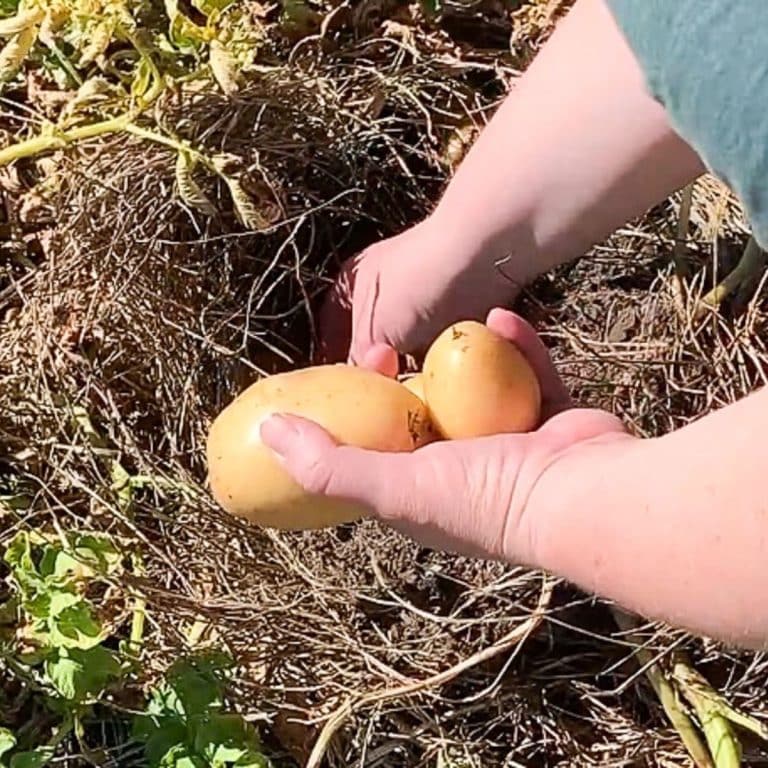How to Increase Your Harvest by Planting a Pollinator Garden
A pollinator-friendly space not only helps attract and support pollinators and beneficial insects but can also increase the yields of your crops.
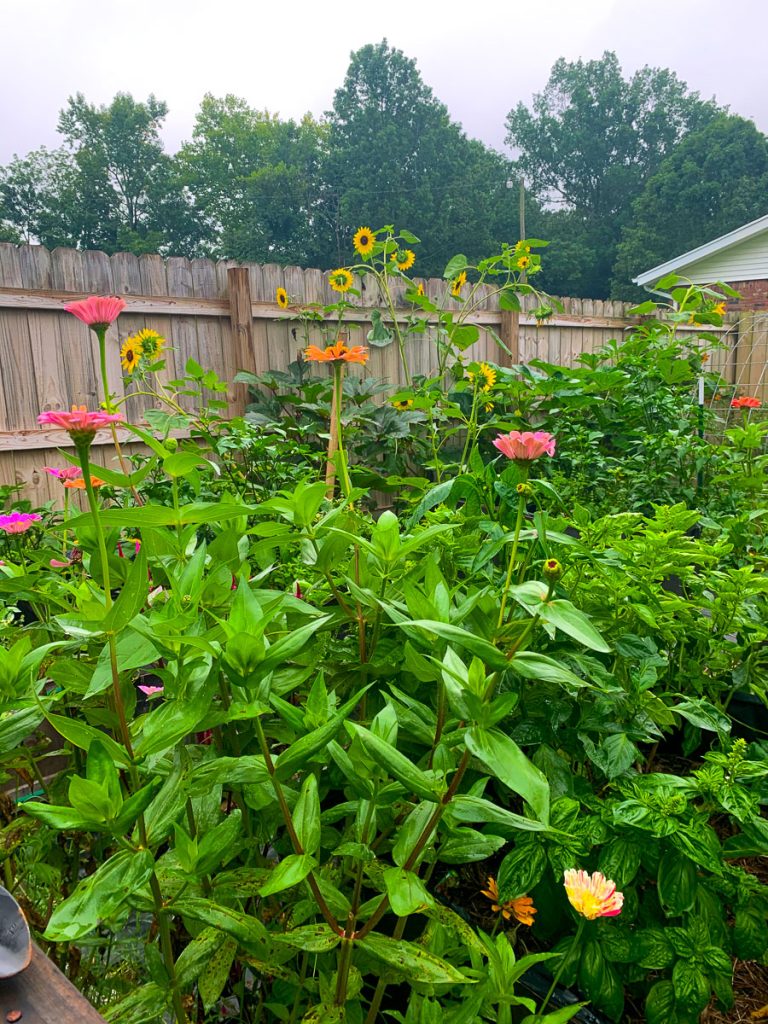
As gardeners, we often wonder how we can give back to the pollinators who are so crucial to our garden’s success, while also boosting the health and productivity of our plants. One of the most effective ways to do this is by planting a pollinator garden.
Bees, butterflies, and other beneficial insects rely on specific plants for nectar, habitat, and food sources. By creating a pollinator-friendly environment, you can significantly enhance the biodiversity of your garden.
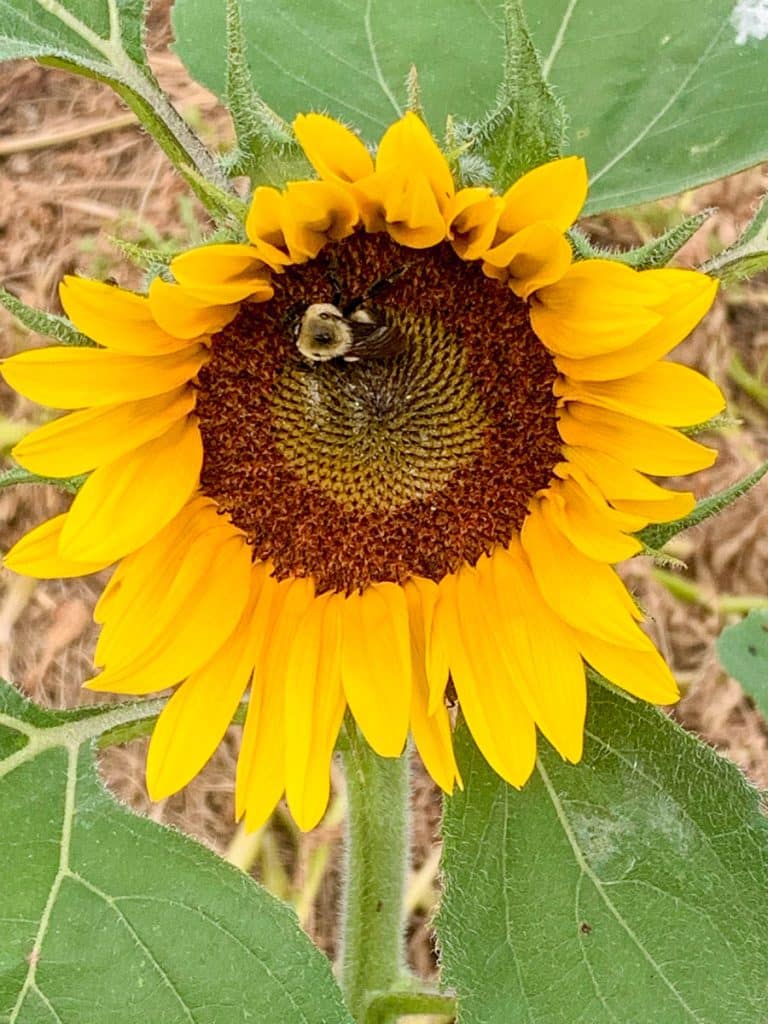
In this post, I will walk you through the basics of planting a pollinator-friendly garden.
However, if you want more in-depth information on how to boost yields with bees and butterflies, be sure to check out my ebook, Pollinator Guide: How to Boost Yields Naturally with Bees and Butterflies. It includes 60+ pages of detailed considerations for planting the best pollinator garden.
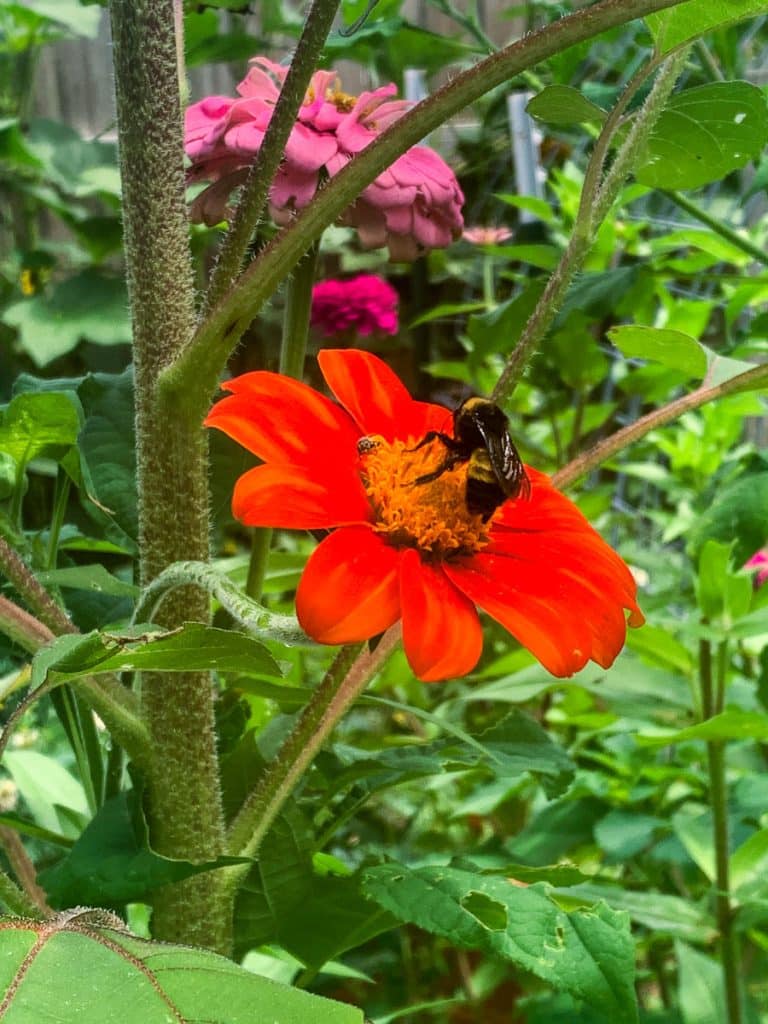
This guide features my favorite plants, the best varieties of each type, everything pollinators need to call your garden home, how to plant a pollinator garden in small spaces, and more!
Why Plant a Pollinator Garden?
Pollinators like bees, butterflies, and other beneficial insects are key to maximizing the yields in your garden. These hardworking creatures help with the pollination of many crops, ensuring higher productivity and better-quality harvests.
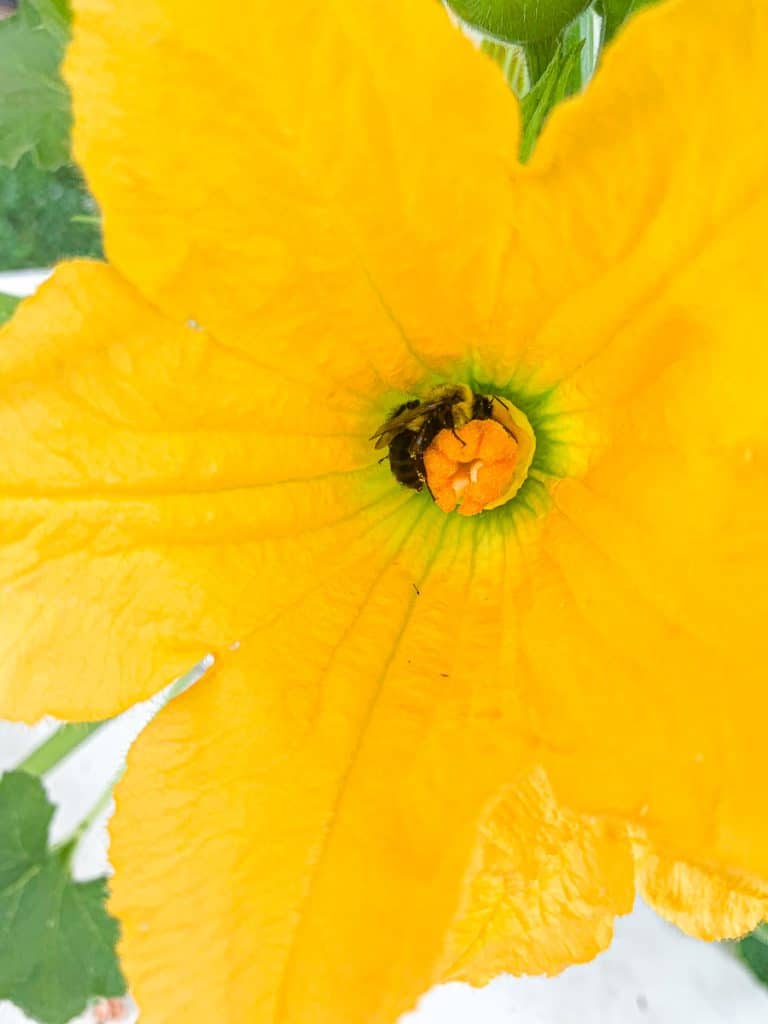
As an Amazon Associate, I earn from qualifying purchases. This post may contain affiliate links, which means I make a small commission at no extra cost to you. See my full disclosure here.
Unfortunately, pollinators are facing threats from habitat loss, climate change, invasive species, and pesticide use. By planting a pollinator-friendly garden, you can support these essential insects, creating a thriving ecosystem that boosts the health and harvest of your plants.
What Are Pollinators?
Pollinators help plants reproduce by moving pollen from one bloom to another, often while they are feeding on the plant’s nectar. Common pollinators include native bees, honeybees, butterflies, moths and even some beetles.
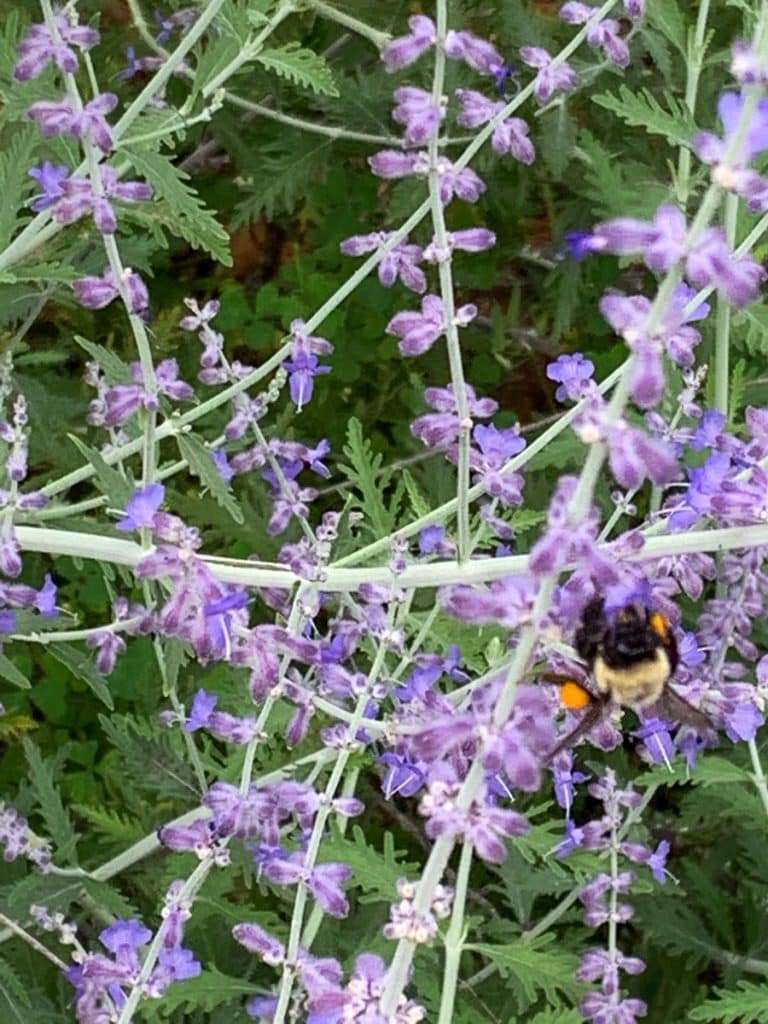
Native bees are especially vital, as they are often more efficient at pollination than non-native species. By focusing on the needs of native pollinators, you can create a more sustainable, productive and thriving garden.
How to Plant the Perfect Pollinator Garden:
Step One: Pick the Right Location for your Pollinator Garden
Full Sun vs. Shade
Before you start planting, take into consideration the light conditions in your garden. Most pollinator-friendly plants thrive in full sun, which typically means six or more hours of direct sunlight a day. Plants like sunflowers, lavender, and echinacea do particularly well in these conditions.
However, you can also plant some native trees and shrubs that provide both shade and shelter, like dogwoods and redbuds, which offer a habitat for pollinators during the heat of summer.
If your garden has areas with less sunlight, don’t worry! Many pollinator-friendly plants also grow well in partial shade, such as coral bells and columbine. Make sure to choose plants that are suited to the light conditions of each part of your garden to maximize pollinator success.
Step Two: Pick the Right Plants for Pollinators
Creating a successful pollinator garden starts with selecting the right plants. A diverse range of native flowers, shrubs, trees, and herbs will provide the nectar, pollen, and habitat that pollinators need.
If you’re ready to start your own pollinator garden but are new to gardening, visit a local nursery and ask about native seeds and plants. You can also gather information from your local extension office about which plants are best suited for your region’s climate and pollinator needs.
If you’d like an in-depth guide on which plants to choose and how to grow them, check out my pollinator guide, which offers 60+ pages of detailed information. Now, let’s break down some important factors to consider when choosing plants for your garden.

1. Native Bees and Other Pollinators
Native bees are crucial pollinators that have adapted alongside specific native plant species in your region. When planning your pollinator garden, it’s best to choose plants that are native to your area, as these will be most attractive to native bees and other pollinators.
A diversity of native plants ensures a steady food supply throughout the seasons. For more information on specific low maintenance and native plants, check out my ebook, Pollinator Guide: How to Boost Yields Naturally with Bees and Butterflies.
2. Host Plants for Caterpillars and Larvae
In addition to providing nectar and pollen, you’ll also want to include host plants. These plants serve as food sources for caterpillars and larvae, the early stages of pollinators like butterflies and moths.
Think of them as a “caterpillar nursery,” offering these young pollinators the food and shelter they need to grow. Common host plants include milkweed for monarch butterflies and parsley for swallowtails. By planting these species, you’re supporting the full life cycle of pollinators.
3. Pollinator-Friendly Plants
Not all flowers are created equal when it comes to attracting pollinators. You’ll want to focus on planting pollinator-friendly plants that offer a rich nectar source and are accessible to a variety of species. Some great options include coneflowers, lavender, sunflowers, and bee balm.
These plants provide not only nectar but also pollen, which is a crucial food source for pollinators. Choose plants that are rich in color and scent, as these will attract bees and butterflies.
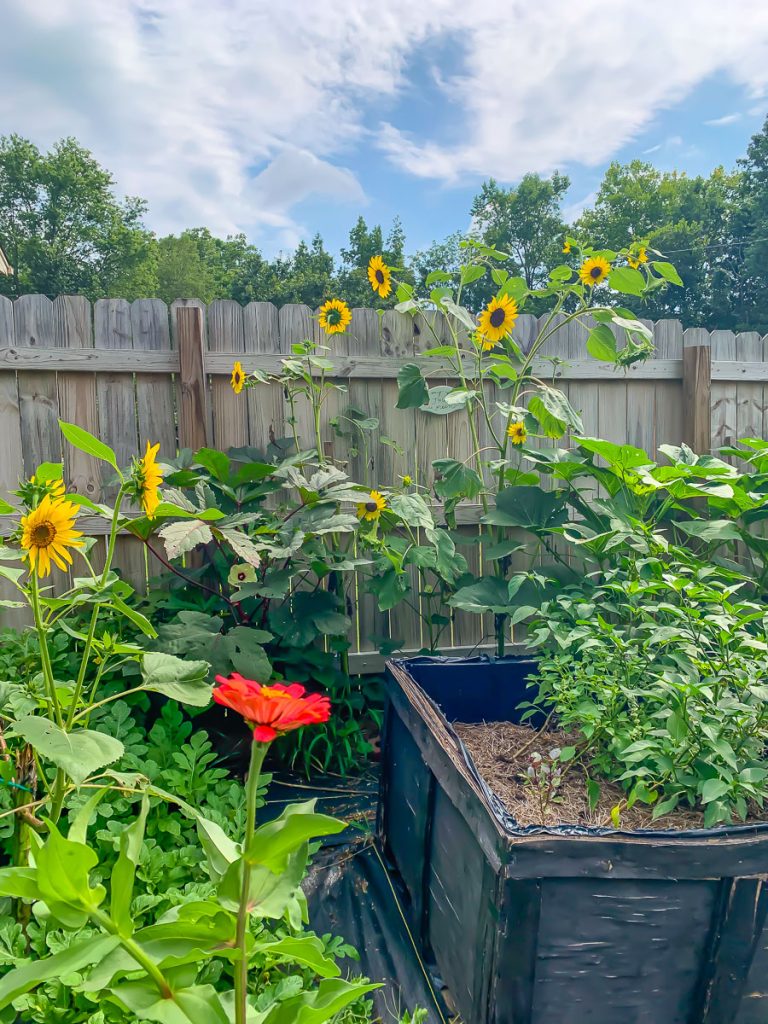
In my ebook guide, I go in-depth on how to choose the right types of plants for each pollinator, including specific varieties that work best for different species. This will ensure you’re selecting the most effective plants to support the pollinators in your garden and maximize your harvest!
Step Three: Keep the Blooms Coming All Season Long
Planting for Seasonal Diversity
One of the best ways to create a sustainable pollinator garden is by planting a variety of species that bloom at different times throughout the year. A garden that provides a nectar source all season long will attract a range of pollinators from early spring to late fall.
Early Spring: Crocus, hyacinth, and violets are excellent early spring flowers that provide nectar when many other plants have yet to bloom.
Mid-Spring to Summer: Plants like sunflowers, zinnias, lavender, and bee balm are in full bloom during these months, offering abundant nectar and pollen for pollinators.
Late Fall: As the season winds down, plants like asters, goldenrod, and late-blooming sunflowers provide valuable resources for pollinators preparing for winter.
Creating a diverse planting schedule ensures your garden remains a consistent source of food and shelter for pollinators, which in turn helps boost yields and supports biodiversity in your area.
Step Four: Create a Safe Habitat for Pollinators and Beneficial Insects
How to Create Shelter for Pollinators
In addition to planting the right flowers, you can further enhance your garden’s appeal to pollinators by adding features that provide shelter and safety. For example, leaving leaf litter or creating a small pile of logs and sticks offers essential habitat for native pollinators like solitary bees and beetles.
Similarly, hollow stems from dead plants or small piles of rocks can provide shelter for insects during the colder months.
You can also build your own bee hotel and hang it a few feet off the ground in a sheltered spot near their favorite plants.
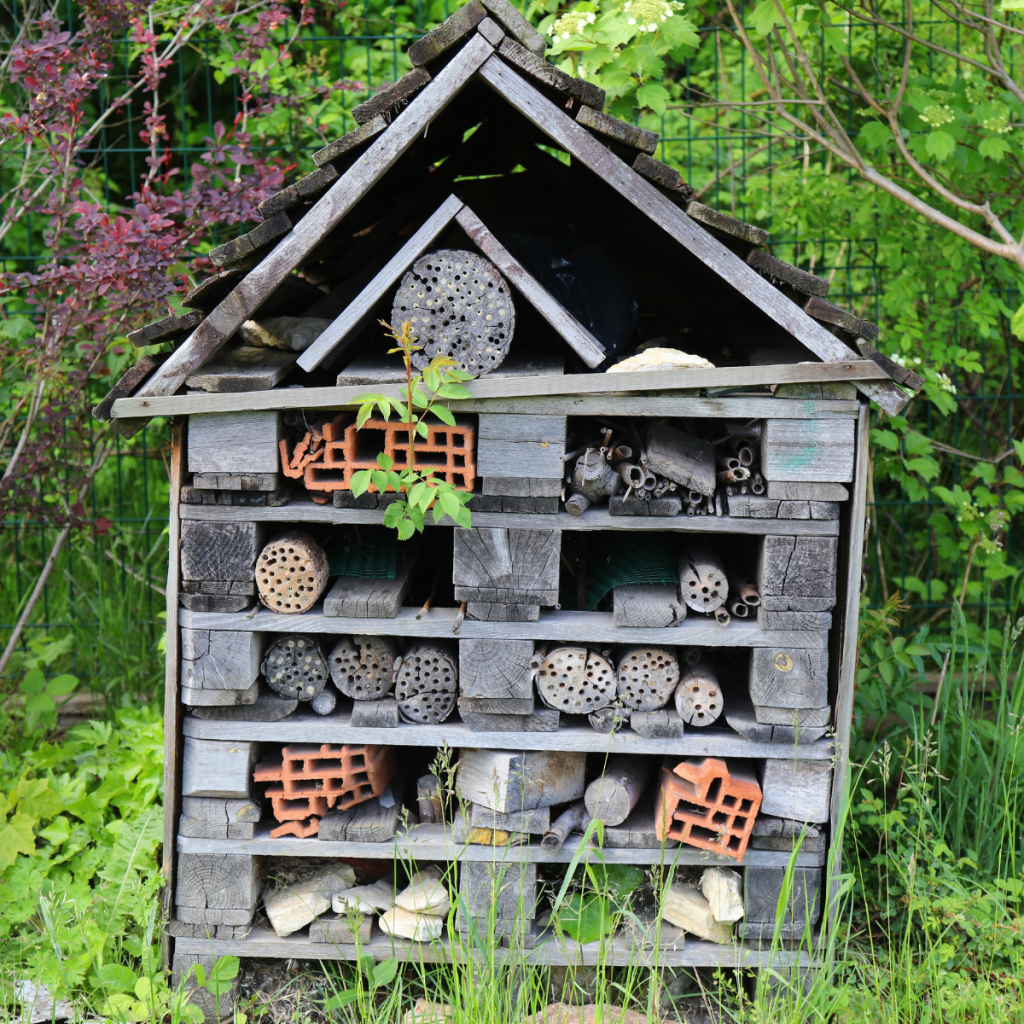
Additionally, be mindful of pesticide use. Pesticides can be harmful to pollinators, so try using organic gardening methods that won’t affect beneficial insects. Focusing on creating a balanced, pesticide-free environment is one of the best ways to keep pollinators thriving.
Step Five: Avoid Battling Unwanted Plants in the Garden
How to Avoid Invasive Species
When selecting plants for your pollinator garden, be sure to avoid invasive species. These non-native plants can disrupt local ecosystems by outcompeting native plants for resources and creating a less hospitable environment for local wildlife. You can consult with a local nursery or local extension office to learn which species are native to your area and which ones to avoid.
A good rule of thumb is to select plants that have historically existed alongside the pollinators in your region.
Invasive plants can also attract non-native pests, further stressing the delicate balance of your pollinator habitat. By focusing on native plant species, you can help protect local ecosystems and support the beneficial insects that depend on them.
Step Six: Just Get Started!
Like any gardening project, planning is important, but what’s MOST important is just getting started! Gardening is a learning experience, no matter how skilled you are. Now that you’re armed with the basics of starting a pollinator garden, grab some seeds and dive in!
If you want to learn more about what pollinators need, how to attract specific species, how to grow pollinator-friendly plants, and more, check out my Pollinator Guide—a step-by-step, in-depth resource that makes planting the perfect pollinator haven a breeze.
Remember, a pollinator garden is more than just a beautiful addition to your landscape—it’s a vital resource for the survival of native pollinators and other beneficial insects.
By planting a diverse range of native species, providing nectar sources, avoiding invasive plants, and creating habitat spaces, you can make a significant impact on the local ecosystem while boosting the health and yields of your garden.
Start today and transform your garden into a thriving pollinator paradise!
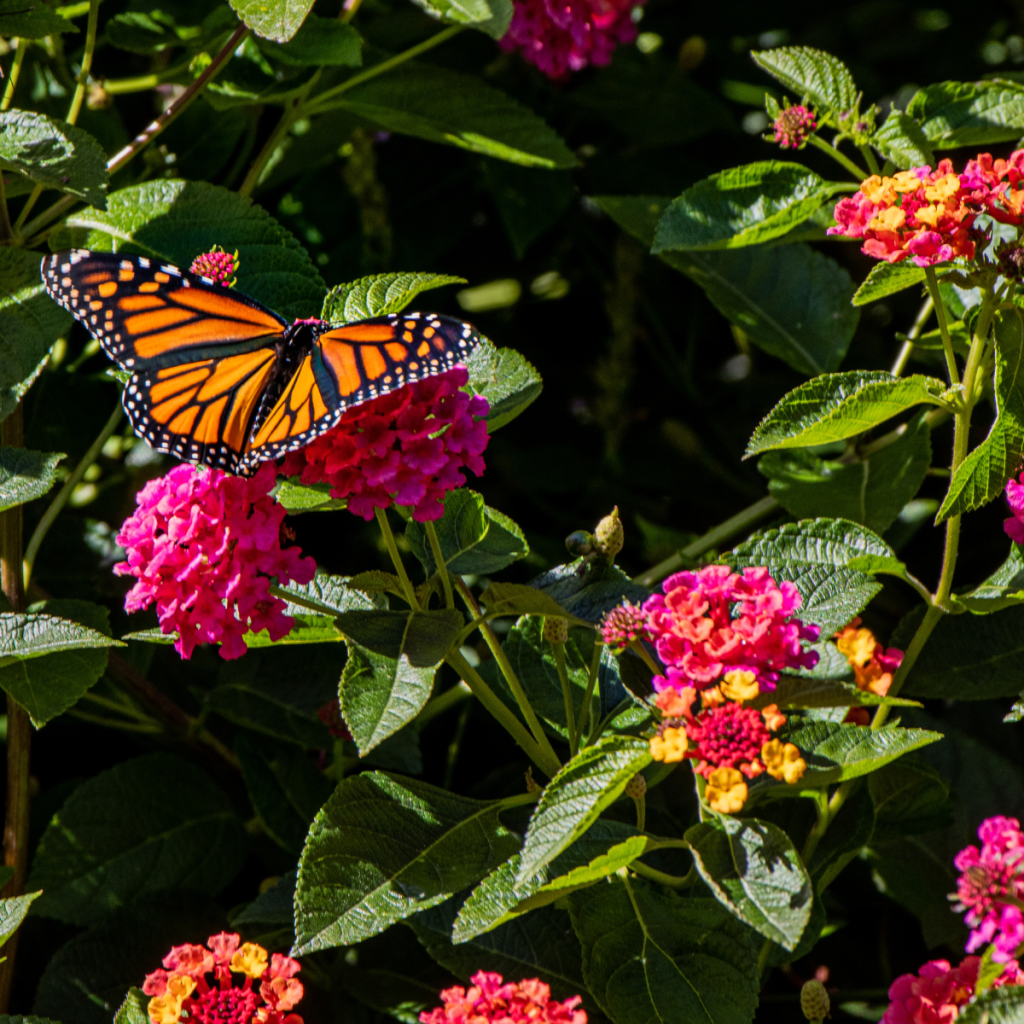
Take Your Garden to the Next Level:
Ready to take your garden to the next level? Grab my in-depth 60+ page ebook, Pollinator Guide: Boosting Yields Naturally with Bees and Butterflies, and get all the detailed info you need to create a flourishing garden packed with pollinators!
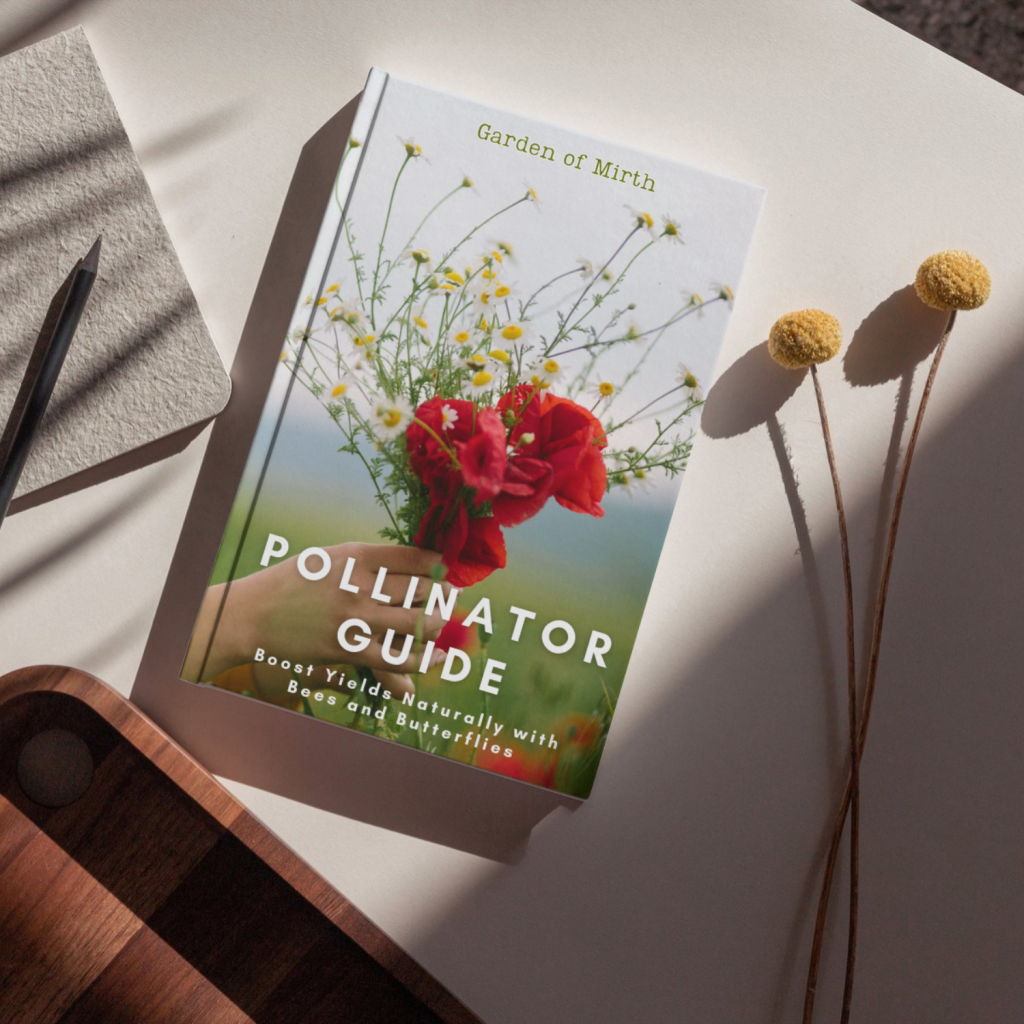
From the best plants to attract bees and butterflies, to tips for growing in small spaces and sourcing heirloom seeds, this guide has everything to help you boost your garden’s productivity naturally.
Don’t just stop at the basics—unlock the full potential of your garden today!
Get the ebook, Pollinator Guide: How to Boost Yields Naturally with Bees and Butterflies here.
